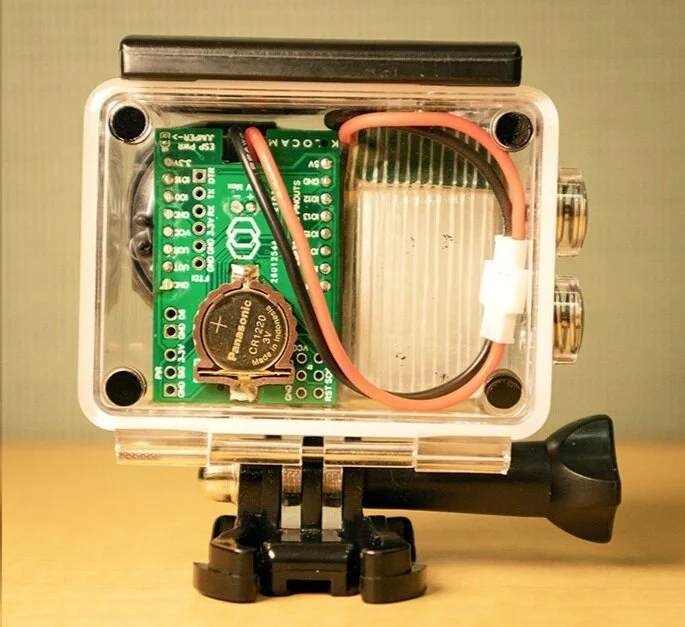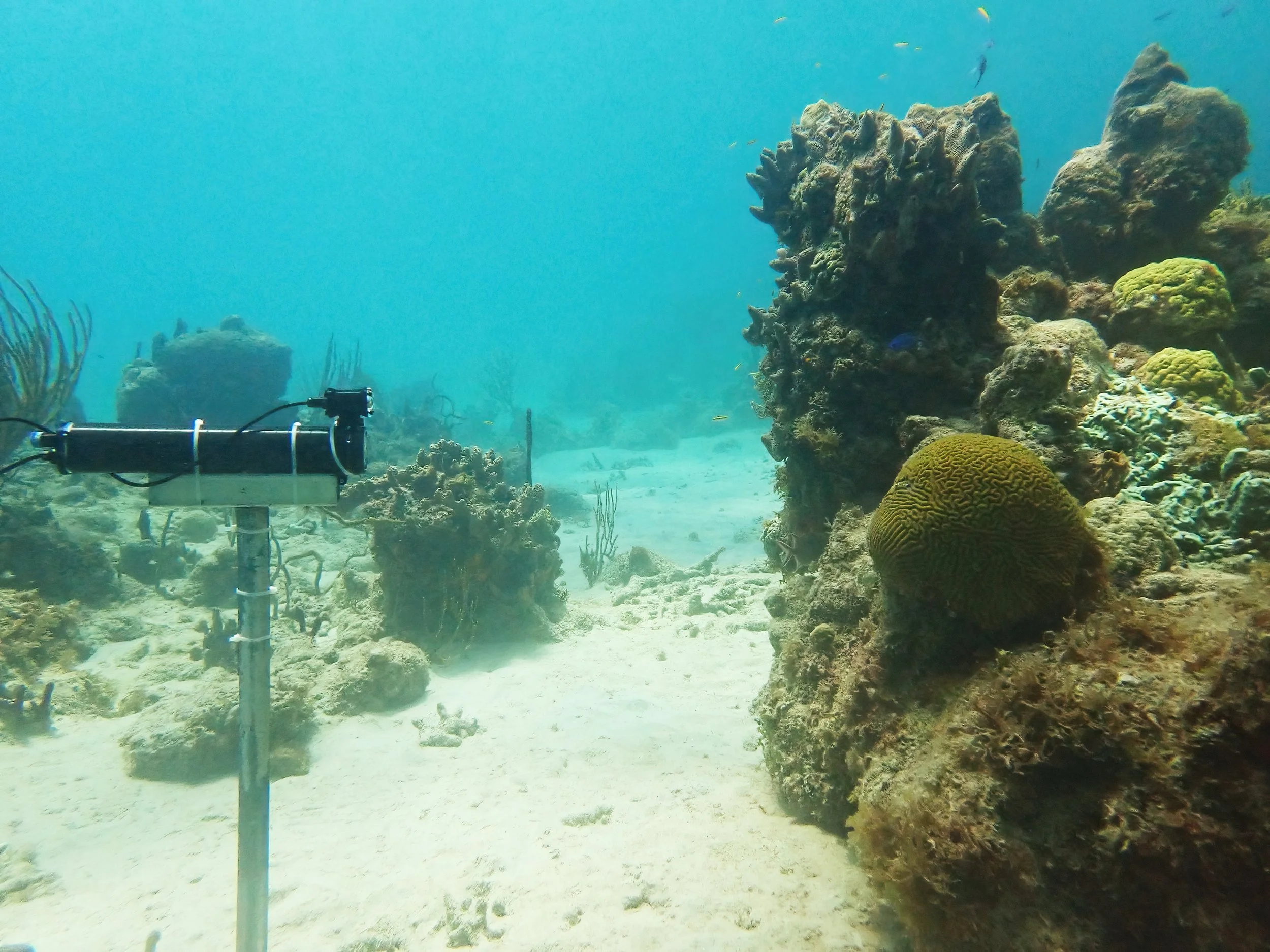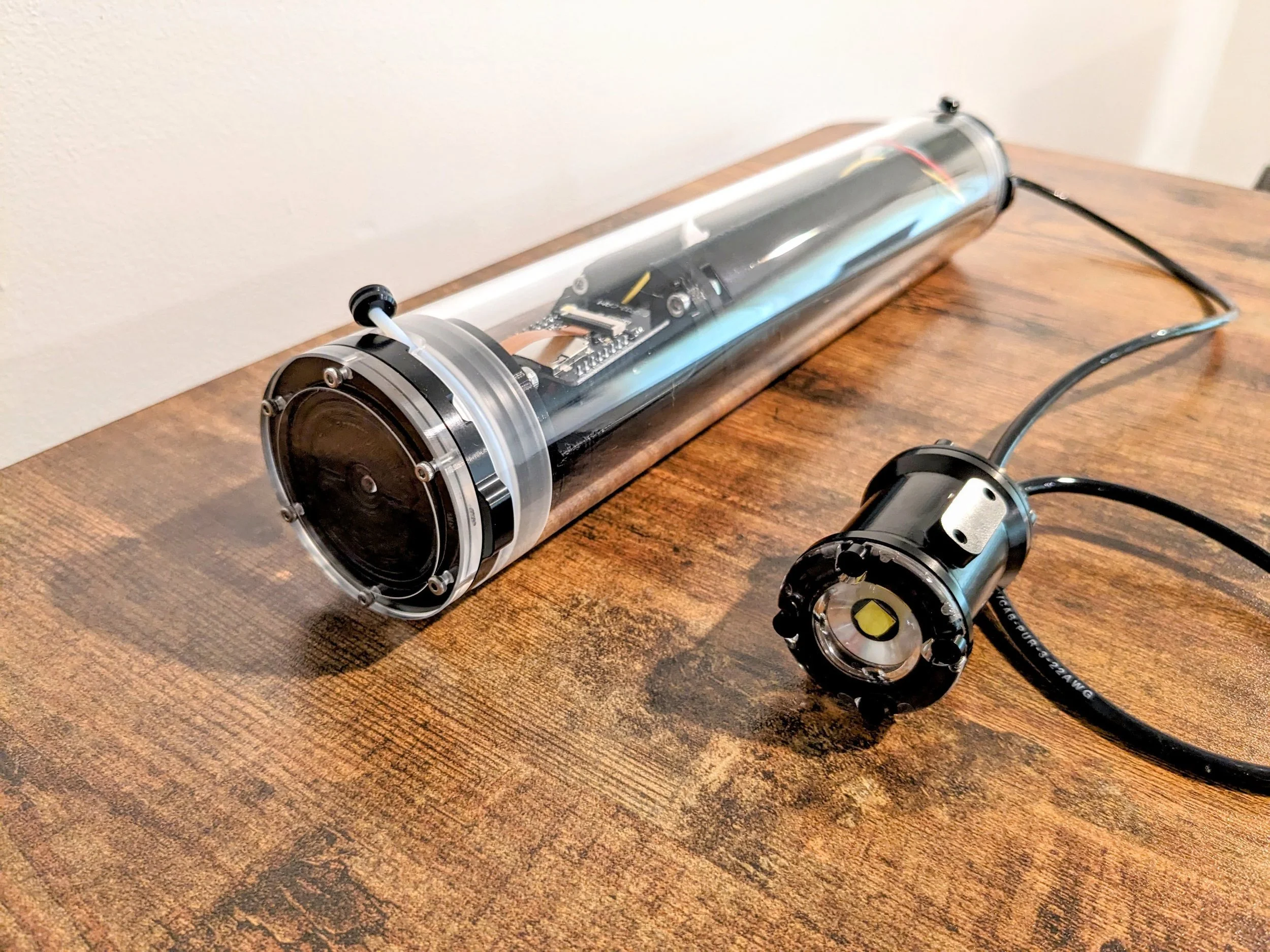KiloCam: A Camera for Wildlife Conservation
My work in conservation isn’t limited to what I can capture through the lens. As a career marine scientist I also design open-source tools that help researchers, restoration practitioners, and citizen scientists better understand and protect natural ecosystems.
One of those tools is KiloCam, an affordable, ultra-efficient time-lapse camera built for long-term deployment in harsh environments. Originally developed to monitor marine and freshwater habitats, KiloCam has grown into a flexible platform for ecological monitoring in a wide range of settings.
Low-cost & open-source — KiloCam is built around the ESP32-Cam, keeping it accessible to anyone with a conservation story to tell. Just snap your KiloCam board onto any ESP32-Cam board programmed with the accompanying code.
Extremely power efficient — With carefully scheduled image capture and a real-time clock, KiloCam can operate for weeks or longer on a small battery depending on capture frequency.
No soldering required — Designed for ease of use in the field, including my citizen scientists and students. No engineering background required!
Modular & expandable — Use digital I/O pins on the KiloCam board to trigger sensors, control LEDs, or respond to external stimuli.
Whether you’re studying seagrass beds, tracking restoration progress, or documenting seasonal change, KiloCam makes long-term image collection simple and scalable.
Why Tech Belongs in Conservation
We need more eyes on the natural world—and more ways to make those observations matter. KiloCam reflects my belief that conservation technology should be affordable, adaptable, and shared. It’s one small piece of a bigger puzzle: empowering people to witness and respond to ecological change.
Want to build your own KiloCam? You can buy your circuit board using the button below and assemble it on using our complete build guide for standard KiloCams.
Looking to build a custom KiloCam system? Check out our complete build guide for custom KiloCam systems, such as for monitoring coral spawning.
KiloCam can be housed in a standard underwater action camera housing for ~$70 total cost to build
Custom KiloCam-based systems rated to 100 meters and equipped with high-power LEDs can be built to monitor nocturnal coral spawning for ~$600 total cost to build
Real-world footage from custom KiloCam systems used to monitor nocturnal coral spawning in the U.S. Virgin Islands






